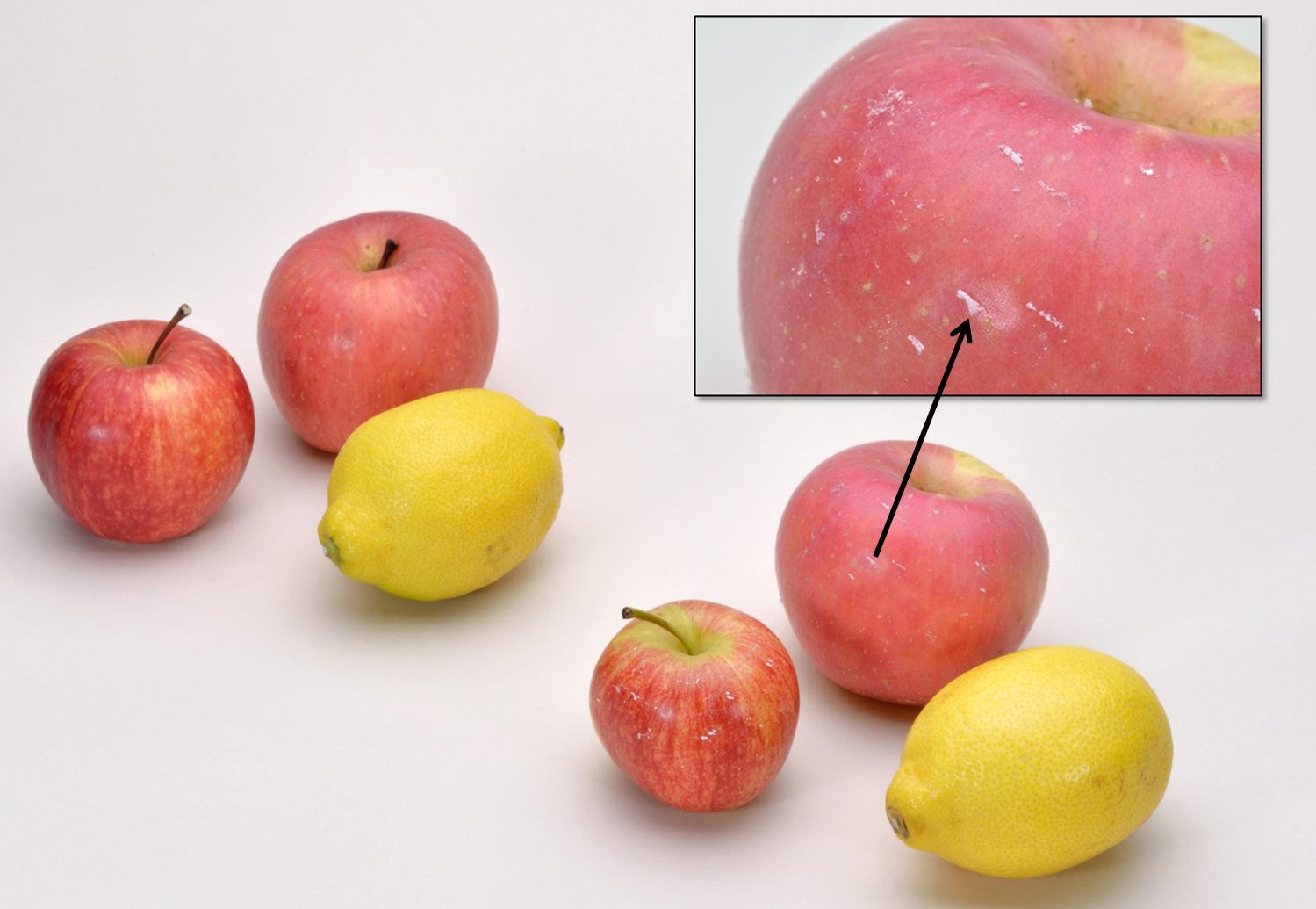
Food Safety Focus (120th Issue, July 2016) – Food Safety Platform
The Coat on Fruits – Wax?
Ms. Michelle CHAN, Scientific Officer,
Risk Assessment Section,
Centre for Food Safety
Fruits provide sources of dietary fibre and vitamins and form an important part of our healthy diet. However, many fresh fruits are highly perishable with short shelf li ves . To protect fresh produce from dehydration and postharvest decay and also to enhance their appearances, fruit producers may apply wax on some of these products.
Natural Wax as Protective Coat of Fruit
Water is the principal component of fresh fruits which constitutes between 80 to 90% of a produce's fresh weight. Fruits are covered by a layer of natural wax which acts as a barrier to reduce moisture loss and at the same times give the fruit a shiny surface. However, after a fruit is harvested and is being washed to clean off dirt and soil prior to sale, substantial amount of the natural wax on its surface may be removed. Excessive loss of moisture from fruits may result in product shrivelling and/or wilting as well as undesirable textural changes which negatively affect the appearance and edible quality of the product.
Purpose and Process of Fruit Waxing
To supplement or replace the natural protective coat on fruit, wax is artificially applied to produce such as apples, citrus, peaches, nectarines. The wax applied, not only reduces the moisture loss and enhances the appearance of the product by adding a bright sheen, but also protects the fruits from postharvest decay which extends the shelf life. Waxing can seal small cracks and dents in the rind or skin and establishes a barrier against the entrance of fungal and bacterial pathogens into the product. It also creates a non-water compatible surface which is not conducive to growth and development of pathogens.

Unwaxed fruits (left) and waxed fruits (right) both have bright shiny surfaces. A waxed apple with bits of its wax scraped off (top right)
Waxing of fruit is the process of applying a thin layer of edible wax to the outer surface of the product. It can be done in several different ways, ranging from manual rubbing of the product surface, dipping or submergence in wax, to automated roller brush application. During the process, only a tiny amount of wax is required to provide a microscopic coating surrounding the entire article/crop. In general, each piece of waxed produce has only a drop or two of wax.
Nonetheless, waxing does not improve the quality of inferior products. Heavy application of wax may, on the contrary, adversely affect the quality of fruits. For instance, wax whiting (also called chalking) may occur on the surface of fruits if they have been subjected to excessive heat or moisture. This often occurs after removal of the waxed products, in particular those heavily coated with a wax known as shellac, from cold storage to higher temperatures. The condensation of the moisture causes the shellac to become partly solubilised and subsequently results in white deposits that are translucent in appearance. On other occasions, heavy application of wax can block fruit gas exchange, leading to the development of off-flavours.
Waxing Materials
Waxing materials can be made synthetically or derived from natural sources. Natural waxes may be obtained from insects (e.g. beeswax and shellac) or from plant (e.g. carnauba wax and candelilla wax). These waxes, as kinds of food additives, have been evaluated by the Joint FAO/WHO Expert Committee on Food Additives, an international food safety authority and are considered that their uses in foods are not of safety concern. According to Food and Agriculture Organization of the United Nations, waxing is one of the general operations in the fruit packinghouse. Different types of waxes are also permitted to be applied on foods including fruits, in accordance to Good Manufacturing Practice or within specified maximum levels, in different countries, e.g. Australia, New Zealand, the European Union and the United States.
Fruits coated with food grade waxes are generally safe to eat. To enjoy the benefits of consuming fresh fruits, always purchase them from reliable shops and wash them (including those with skins and rinds that are not to be eaten) thoroughly under running tap water to remove any lingering dirt before peeling, cutting and eating.


